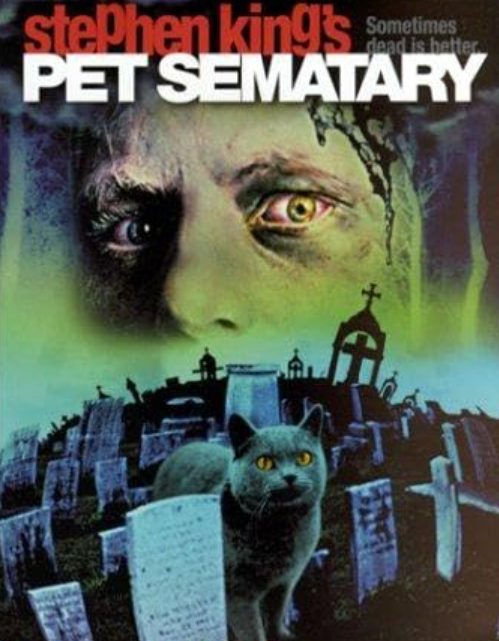As the shadows grow long and jack-o-lanterns blaze, we continue our spine-tingling countdown to All Hallows Eve. Today we exhume a true horror classic from the 80s – Stephen King’s chilling tale of death and darkness, Pet Sematary.
When Doctor Louis Creed moves his family to rural Ludlow, Maine, their idyllic new home holds a secret – an ancient burial ground hidden deep in the woods behind their house. After daughter Ellie’s beloved cat Church is killed, neighbor Jud Crandall takes Louis beyond the pet cemetery to resurrect Church from the cursed Mi’kmaq ritual site. But the cat returns changed, vicious and reeking of death.
Tragedy strikes again when Louis’ son Gage dies in a road accident. Tempted by the dark power of the burial grounds, a grieving Louis buries the boy’s body there, heedless of Jud’s dire warnings. By night, a newly resurrected Gage returns to carve up his inhuman vengeance.
Pet Sematary chilling perversion of innocence lost and disturbing imagery of the once innocent Gage turned murderous monstrosity encapsulates the film’s visceral horror. His childish features once filled with wonder, are now twisted with unearthly malice. His tiny hands that once played with toys, now only clutch a gleaming blade, and his now lifeless eyes that should gaze with childish innocence now glint with predatory hunger as he stalks the dark house.
And Fred Gwynne is superb as kindly Jud, guarding his sinister secret. Behind the grandfatherly smiles, his eyes hold impossible burdens of sorrow and regret. In murmured midnight warnings, he reveals the terrible knowledge etched on his soul – once you cross death’s threshold, there is no coming back whole. Some things lost should remain so, no matter the temptation.
30 years later, Pet Sematary still stalks our nightmares with its bleak vision of death and an afterlife gone horribly wrong. A macabre King classic filled with gruesome resurrections and a heartbreaking descent into madness in the face of grief.
This is horror at its most poignant yet disturbing, leaving us wary of secrets better left buried in the earth. For sometimes, dead is better.

